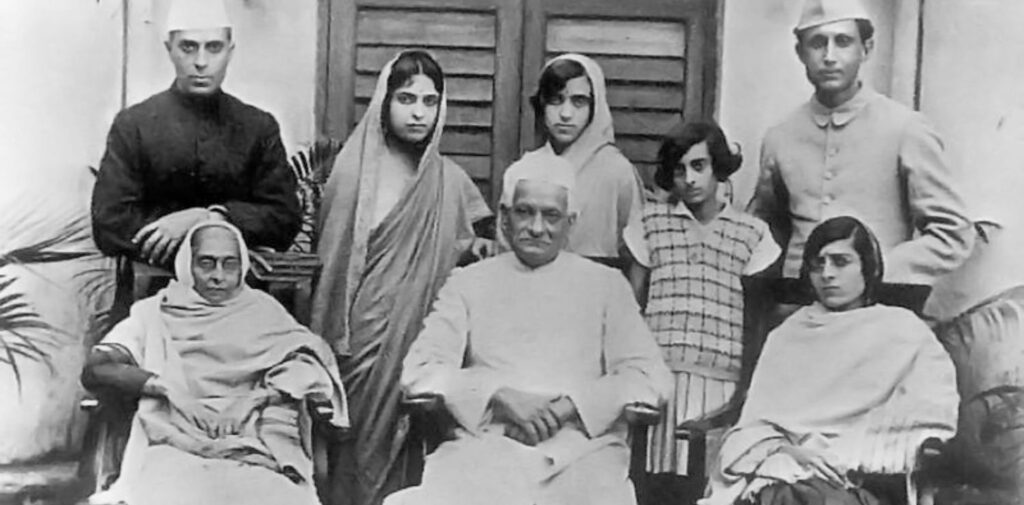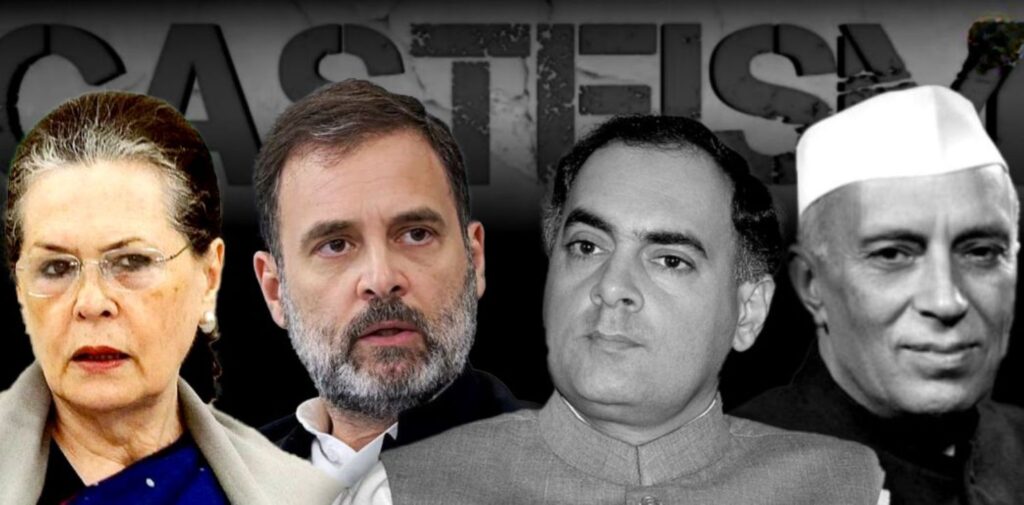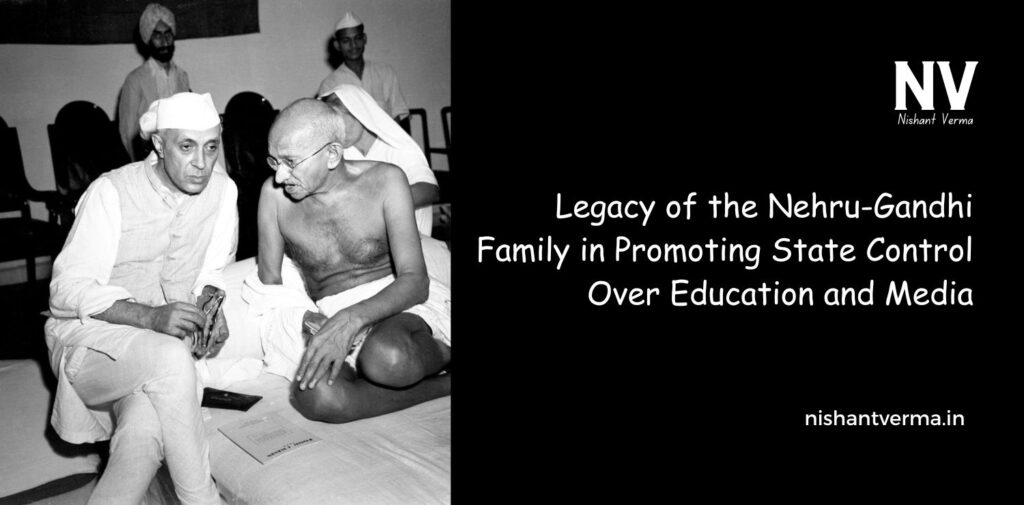Education and media play an important role in shaping the future of any country. Education helps people grow, learn new things, and contribute to society, while the media helps spread information and shapes public opinion. In India, the Nehru-Gandhi family has had a significant influence on both education and media. The family’s vision for the country, especially after independence, has left a lasting legacy of state control over these two important areas.
But why did the Nehru-Gandhi family promote state control over education and media? Let’s explore how this happened and what it means for India today.
Jawaharlal Nehru’s Vision for Education
After India gained independence in 1947, Jawaharlal Nehru, the first Prime Minister of India, became very focused on shaping the future of the country. He believed that education was the key to India’s progress and development. Nehru saw that India needed to modernize and move away from traditional ways of thinking if it wanted to grow economically, socially, and politically.
Nehru knew that in order to make this dream a reality, the government had to play a major role in providing education to all people. At that time, India had very few schools and many people were illiterate. Most children in villages did not have access to education, especially girls and people from poorer communities. Nehru’s government took the responsibility of improving education across the country.

State Control Over Education: Nehru’s Policy
Under Nehru’s leadership, the government took control of the education system and aimed to make it more accessible to all. This meant that the state (the government) would be responsible for building schools, training teachers, and deciding the curriculum that children would learn. Nehru’s government created many new schools and universities to improve the education system. They set up institutions like the Indian Institutes of Technology (IITs) and the Indian Institutes of Management (IIMs) to provide world-class education in science, engineering, and management.
Nehru’s government also decided on the subjects that should be taught in schools, focusing on science, technology, and modern subjects, while reducing the importance of traditional or religious education. This was in line with Nehru’s belief in secularism—the idea that the state should stay neutral and not favor any religion.
By promoting state control over education, Nehru wanted to ensure that all children had the same opportunity to succeed, no matter their background or religion. He believed that education was a tool for building a better and more equal society.
The Role of Indira Gandhi in Education
Indira Gandhi, Nehru’s daughter, became the Prime Minister of India in 1966. She continued her father’s policies in many areas, including education. Indira believed that education should help create a unified India, where people of all backgrounds could come together to work for the country’s progress.
During her time in office, Indira Gandhi’s government introduced new policies to strengthen the education system. She pushed for the creation of more schools in rural areas and focused on improving female education. Indira also believed in the importance of technical education and encouraged the growth of engineering and medical colleges across the country.
Like her father, Indira Gandhi believed that the government should have a strong role in running education. She wanted to make sure that the education system was not controlled by private individuals or organizations, but by the government to ensure equal opportunities for everyone.

The Nehru-Gandhi Family’s Influence on Media
Along with education, the media has also been an important area where the Nehru-Gandhi family exercised state control. After independence, Nehru understood the importance of media in shaping public opinion and spreading information. At that time, India had very few newspapers and radio stations, and most people, especially in villages, did not have access to the news.
To control the flow of information and ensure that people were well-informed, Nehru’s government took a strong role in controlling the media. The government set up Doordarshan, the national television broadcaster, in 1959. Doordarshan became the main source of news and entertainment for the people of India. Similarly, the government also controlled All India Radio (AIR), which broadcasted news and information to millions of people across the country.
Nehru’s government believed that media should serve the interests of the people and support the government’s goals of national development and unity. They wanted to make sure that the media did not spread false or divisive information that could harm the country’s progress.
Indira Gandhi and the Media
When Indira Gandhi became Prime Minister, she continued the tradition of state control over media. During her time, she introduced measures to control the flow of information more tightly. One of the most controversial decisions she made was during the Emergency period of 1975-77, when she declared a state of emergency in India.
During the Emergency, the government took strict control over the media, censoring newspapers, radio, and television. Indira Gandhi’s government used the media to promote its own political agenda and suppress criticism. This period of censorship and media control is often seen as one of the darkest times in Indian democracy.
Even after the Emergency was over, Indira Gandhi continued to maintain a strong influence over the media. The government’s control over television and radio remained strong, and the media often had to report what the government wanted them to.

The Legacy of Nehru-Gandhi Family’s State Control
The legacy of state control over education and media that was started by Jawaharlal Nehru and continued by Indira Gandhi has had a lasting impact on India. On the one hand, the government’s involvement in education helped improve literacy rates, built new schools and universities, and made education more accessible to people from all backgrounds.
The Nehru-Gandhi family’s policies also ensured that the media played a role in spreading national messages of unity and progress. The state-controlled media helped promote the government’s ideas and helped create a sense of shared purpose among the people.
However, there were also challenges that arose from this control. Critics argue that too much state control over education and media can lead to a lack of freedom and independence. When the government has too much influence over education, it can limit the development of new ideas and discourage critical thinking. Similarly, when the media is controlled by the state, it can be used to spread propaganda and limit the voices of opposition.
Many people believe that freedom of the press and the independence of educational institutions are important for a thriving democracy. Over time, India has seen changes in how education and media are controlled, with private schools, news channels, and social media playing bigger roles in shaping public opinion.
Conclusion: A Mixed Legacy
The legacy of the Nehru-Gandhi family in promoting state control over education and media has both positive and negative aspects. On the positive side, their policies helped create a more unified India, provided better access to education for millions of people, and ensured that the media worked to promote national development. However, their control over education and media also raised concerns about freedom of expression and the need for independent thought.
As India continues to grow and develop, it faces the challenge of balancing government involvement with the need for more freedom and diversity in both education and media. The legacy of the Nehru-Gandhi family is still an important part of this ongoing conversation.




